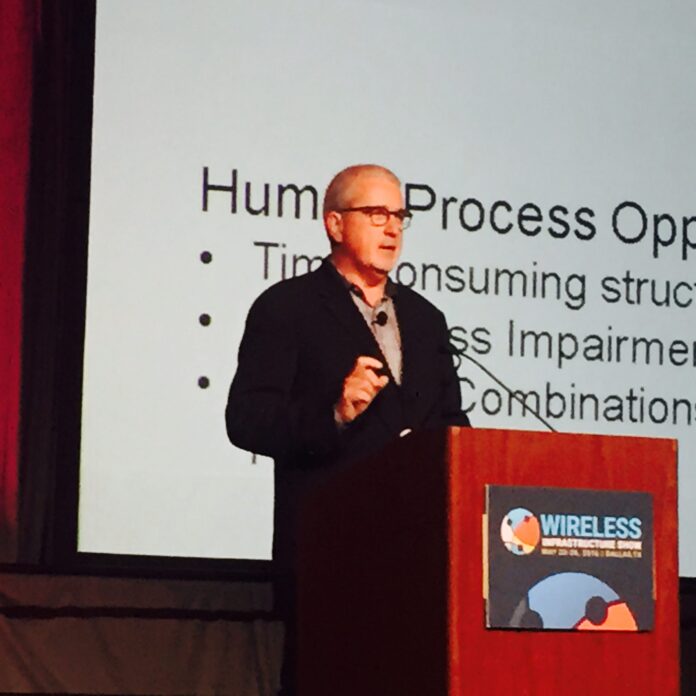How the internet of things is improving public safety
A blend of industrial IoT sensors and consumer devices are being used to enhance public safety and give critical visibility to law enforcement.
Here are some public safety use cases for internet of things innovations.
The cloud offers predictive policing
Predictive policing uses analytics and algorithms to identify potential areas or events of crime before they occur. Think Minority Report.
Companies like Predpol and Hitachi Data Systems offer tools that gather past type, place and time of crime to map criminal behavior patterns. This solution provides each law enforcement agency with customized crime predictions for the places and times that crimes are most likely to occur.

Hitachi’s solution even uses data such as weather patterns, public transit movements, social media activity, gunshot sensors, and several others to make its determination.
These innovations can improve law enforcement’s situational awareness, as well as provide the real-time information that can help prevent incidents from becoming crises.
ShotSpotter
ShotSpotter is an already available product that uses sensors mounted in high crime areas to identify the sound of gunfire. The sensors identify the sound of a gun shot, determine its location, analyze the sound, and then send all of that data to connected police stations within one minute.
ShotSpotter has been deployed in many cities around the country, and has been successful in lowering the rate of gun crime, according to Kova Corp. In Wilmington, N.C., for example, gun crime has been reduced by 2%, while homicides have decreased by 20% since installing ShotSpotter.
SecureCampus is one solution offered by ShotSpotter. According to the company, it is like a fire alarm in an active shooter situation: fire alarms don’t prevent fires but can offer a time advantage in the rare event a fire breaks out. That time advantage can mitigate the damage and save lives.
Analyses show that the average active-shooter incident lasts 12 minutes and the first calls don’t come into 9-1-1 for a full three to five minutes. SecureCampus technology immediately alerts the police. It also provides police with real-time information such as an interior floor plan with how many and where the shots are fired.
ShotSpotter is a well known IoT solution. In fact, yesterday, the City Council of Salinas, California announced it would consider spending $1.5 million for ShotSpotter technology, according to KSBW8.
Cisco IPICS
Cisco IPICS is an emergency response interoperability system at Cisco offices across the United States, Europe, and Asia Pacific. In scenarios like earthquakes, medical emergencies or a building evacuation triggered by a fire alarm, Cisco IPICS ensures rapid response from emergency response teams as well as facilitates information flow to other relevant groups, such as human resources or the Corporate Crisis Management Team (CCMT).
Cisco IPICS Dispatch Console is an end-to-end radio dispatching solution designed for mission-critical radio communications. The Dispatch Console client is the link between dispatchers and field personnel, helping coordinate field response and helping to ensure personnel safety. It extends existing push-to-talk (PTT) radio channels or broadcast networks, so that users with a variety of communication devices, such as landline phones, cell phones, IP phones, and satellite phones, can share information and participate in an event.
Video, drones, and efficiency
Video quality and the resulting data and analysis from video feeds is more granular than ever. New, smarter algorithms for facial and license plate detection are helping law enforcement solve cases, and video feeds given to first responders allow them to accurately respond to a situation.

Drones are another important innovation that help law enforcement stay safe in high-danger situations by reaching areas that are difficult to reach or unsafe. In July 2016, police officers in Dallas used a drone to deploy a bomb near an active shooter, ending a situation that resulted in the death of five police officers.
The use of the internet of things can also give emergency crews the swiftest routes to a location by using highway sensors and adaptive traffic management.
Law enforcement
According to Cisco, integrating remote video and real-time collaboration at all levels of law enforcement allows agencies to:
- Control evidence
- Speed response time
- Reduce crime
- Control costs
With instant face-to-face collaboration, field personnel can reach experts and other resources without delay:
- E-warrants: Provide immediate access to courts from precinct or squad car
- Video arraignment: Reduces costs and safety issues of detainee transport
- Remote appearance: Eliminates travel and delays
- Remote interpretation: Allows safety personnel to conduct field interviews without delays, no matter the language
- Situational awareness: Delivers video and instant field status to and from the scene
Emergency response
Here are the results of connecting emergency response crews, according to Cisco.
- Comply with safety mandates and regulations
- Maintain constant contact with dispatchers and fleet managers
- Transmit live telematics data for proactive maintenance of vehicles
- Use a GPS device to guide them to the scene by way of the fastest and most direct route
- Use vehicle-to-infrastructure (V2I) communication so vehicles can communicate with traffic lights, rail crossings, traffic cameras, and roads Also, high-resolution monitors can be loaded on emergency response vehicles to provide comprehensive intelligence and emergency management capabilities through multiple perspectives using video and sensor information. Images captured by first responders, and even drone-based video cameras, can provide real-time situational awareness back to commanders and headquarters, which can help incident commanders manage resources.

